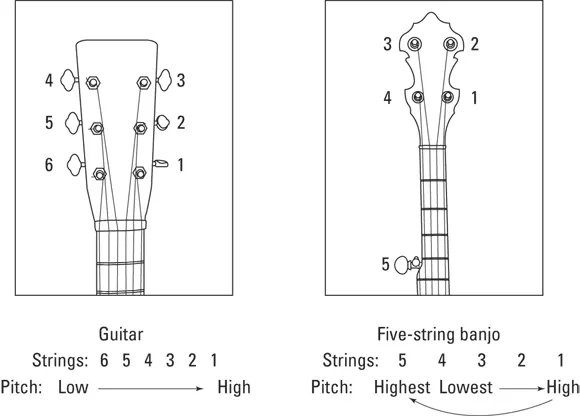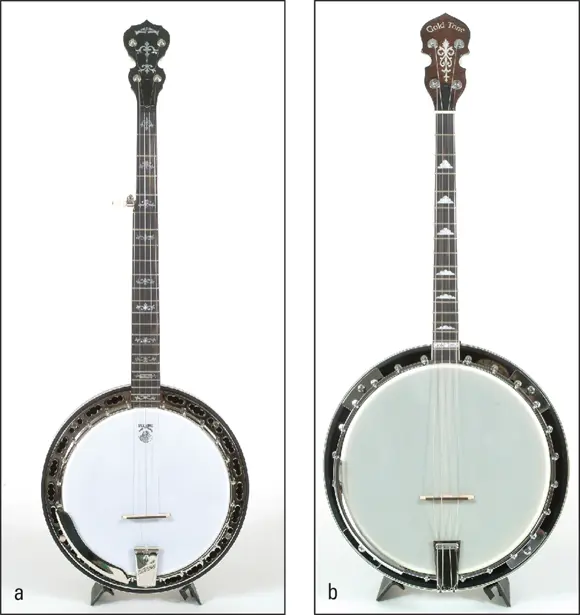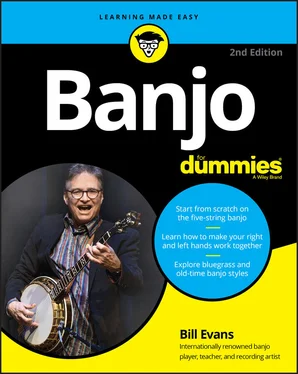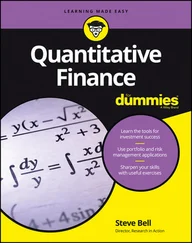Banjo players usually remember well the precise moment in time that they became hooked on the instrument. For me, growing up as a suburban teenager far from significant hills of any kind, that moment arrived when I was watching Roy Clark play banjo on Hee Haw and thinking to myself, “If I can somehow sit through this show every week, I think I can eventually learn ‘Cripple Creek.’” I didn't especially like country music at that time, and I'd never heard of bluegrass music — but I really loved the sound of the banjo.
Growing up in the 1970s, I could also hear the banjo as a background instrument on hit songs from the Eagles, the Doobie Brothers, Neil Young, and James Taylor. Hearing the banjo in these contexts made me believe that the banjo must be cool if those musicians used it on their recordings, despite what my friends thought about this disturbing turn in my musical tastes.
Today, you can hear the sound of the banjo in just about any style of music, short of Gregorian chant (although I bet there's a monk in a monastery somewhere in the world learning “Foggy Mountain Breakdown”). More than ever, the banjo is an integral part of contemporary music, showing up on stage with Mumford & Sons, Taylor Swift, the Avett Brothers, and most of the biggest hat and hair acts in country music.
The path-breaking banjo player Béla Fleck has performed with jazz artists Chick Corea and Marcus Roberts, and he has composed a concerto for banjo and orchestra. The actor/comedian/writer Steve Martin is bringing the banjo to thousands of new listeners who come to his concerts for the jokes but leave humming Steve's original banjo music. In addition, thousands of banjo players come together every year at their favorite bluegrass and old-time music festivals, camps, and workshops to make music together, as they have for many decades.
My own youthful enthusiasm for the banjo evolved into a wonderful, lifelong relationship that's still going strong. I get a joyful feeling every time I play a tune on the banjo. I'm also amazed at how my love for the instrument has opened the door to many new and wonderful experiences (such as graduate school, international touring and teaching, and this book!) and is at the basis of many of my most cherished friendships. When you play the banjo, you're not just playing a musical instrument; you're opening a door to new life experiences, such as the joy you'll experience playing music with others. Even if you never become as obsessed about the banjo as I am, I believe that the banjo can improve your life and make you a happier person if you give it the chance.
There's no doubt about it: The banjo is hot right now — and it's time for you to join in on the fun!
Identifying Different Kinds of Banjos
Although the five-string banjo is by far the most popular type of banjo being played today, decades ago the most popular banjos in the first half of the 20th century were four-string tenor and plectrum banjos. These banjos are really different instruments and shouldn't be confused with the five-string banjo. Understanding the differences between banjos is important, because before you begin your adventure, you need to make sure you're traveling with the right kind of equipment.
In the following sections, I compare and contrast the different instruments in the banjo family, so you don't mistake one type of banjo for another.
Five-string banjo: The subject of this book
The short 5th string is what makes the five-string banjo different from other types of banjos and from just about every other instrument in the known universe. Most of the time, you know immediately that you're looking at a five-string banjo when you see a tuning peg (a geared mechanism that keeps the string in tune) sticking out almost halfway up the neck (the long, narrow piece of wood where you fret strings with the left hand; for more on these terms, see the later section “ Knowing the Parts of a Banjo”). This tuning peg holds the 5th string of the banjo (see Figure 1-1).
 The 5th string is a crucial distinguishing characteristic of the five-string banjo, both in the instrument's appearance and in the sound of the music. The 5th string is not only shorter than the other four banjo strings, but this string is also the highest in sound (or pitch ). The 5th string on a banjo lies within easy reach of the right-hand thumb, which you use to play this string in all kinds of banjo music. Having the highest-pitched string next to the string with the lowest pitch is unusual in comparison to how pitches are arranged on the strings of a guitar (as you can see in Figure 1-1), but this is one of the things that makes the banjo sound so great! This characteristic of the banjo is also one part of the instrument's ancient African ancestry (for more on this, see Chapter 11).
The 5th string is a crucial distinguishing characteristic of the five-string banjo, both in the instrument's appearance and in the sound of the music. The 5th string is not only shorter than the other four banjo strings, but this string is also the highest in sound (or pitch ). The 5th string on a banjo lies within easy reach of the right-hand thumb, which you use to play this string in all kinds of banjo music. Having the highest-pitched string next to the string with the lowest pitch is unusual in comparison to how pitches are arranged on the strings of a guitar (as you can see in Figure 1-1), but this is one of the things that makes the banjo sound so great! This characteristic of the banjo is also one part of the instrument's ancient African ancestry (for more on this, see Chapter 11).

Illustration by Wiley, Composition Services Graphics
FIGURE 1-1:Comparing strings and pitches on a guitar (left) versus a five-string banjo (right).
Tenor and plectrum banjos: Look for another book
In the early decades of the 20th century, folks loved the quality of the banjo's sound so much that they attached different kinds of necks to the banjo body to create new instruments with different numbers of strings. These hybrid instruments were tuned and played differently from the five-string banjo.
Tenor and plectrum banjos are examples of this phenomenon. These four-stringed instruments are commonly used in traditional jazz, Dixieland, and Irish music. They don't have the short 5th string and are usually played with a flatpick instead of with the fingers. Although these banjos make the same kinds of sounds and look a lot like the five-string banjo, tenor and plectrum banjos use other tunings and playing techniques and are viewed as different instruments by banjo fans.
 Don't confuse these tenor and plectrum banjos with the five-string variety. The bodies of these instruments are the same, but the necks reveal the difference (see Figure 1-2). You can't play five-string banjo music on a four-string tenor or plectrum banjo — these instruments aren't interchangeable! You need a five-string banjo to play five-string banjo music.
Don't confuse these tenor and plectrum banjos with the five-string variety. The bodies of these instruments are the same, but the necks reveal the difference (see Figure 1-2). You can't play five-string banjo music on a four-string tenor or plectrum banjo — these instruments aren't interchangeable! You need a five-string banjo to play five-string banjo music.

Photographs courtesy of Elderly Instruments
FIGURE 1-2:Comparing a five-string (a) and a tenor (b) banjo.
In the early decades of the 20th century, America was mad for anything that sounded remotely like a banjo. (Amazing, isn't it? Just like it is today!) Instrument makers took guitar and mandolin necks and attached them to banjo bodies, creating new kinds of instruments of all sizes that had that great banjo sound but could be played using guitar and mandolin techniques.
Banjos with mandolin necks usually have eight strings and are called mandolin banjos or mando-banjos. These instruments are smaller than most five-string banjos . Banjos with guitar necks have six strings and are called guitar banjos. These instruments are perfect for guitar players who want that banjo sound (and maybe are too lazy to actually learn to play the banjo — but you didn't hear that from me!). Guitar banjos have six strings instead of five and can be a bit larger than most five-string banjos.
Читать дальше

 The 5th string is a crucial distinguishing characteristic of the five-string banjo, both in the instrument's appearance and in the sound of the music. The 5th string is not only shorter than the other four banjo strings, but this string is also the highest in sound (or pitch ). The 5th string on a banjo lies within easy reach of the right-hand thumb, which you use to play this string in all kinds of banjo music. Having the highest-pitched string next to the string with the lowest pitch is unusual in comparison to how pitches are arranged on the strings of a guitar (as you can see in Figure 1-1), but this is one of the things that makes the banjo sound so great! This characteristic of the banjo is also one part of the instrument's ancient African ancestry (for more on this, see Chapter 11).
The 5th string is a crucial distinguishing characteristic of the five-string banjo, both in the instrument's appearance and in the sound of the music. The 5th string is not only shorter than the other four banjo strings, but this string is also the highest in sound (or pitch ). The 5th string on a banjo lies within easy reach of the right-hand thumb, which you use to play this string in all kinds of banjo music. Having the highest-pitched string next to the string with the lowest pitch is unusual in comparison to how pitches are arranged on the strings of a guitar (as you can see in Figure 1-1), but this is one of the things that makes the banjo sound so great! This characteristic of the banjo is also one part of the instrument's ancient African ancestry (for more on this, see Chapter 11).
 Don't confuse these tenor and plectrum banjos with the five-string variety. The bodies of these instruments are the same, but the necks reveal the difference (see Figure 1-2). You can't play five-string banjo music on a four-string tenor or plectrum banjo — these instruments aren't interchangeable! You need a five-string banjo to play five-string banjo music.
Don't confuse these tenor and plectrum banjos with the five-string variety. The bodies of these instruments are the same, but the necks reveal the difference (see Figure 1-2). You can't play five-string banjo music on a four-string tenor or plectrum banjo — these instruments aren't interchangeable! You need a five-string banjo to play five-string banjo music.











